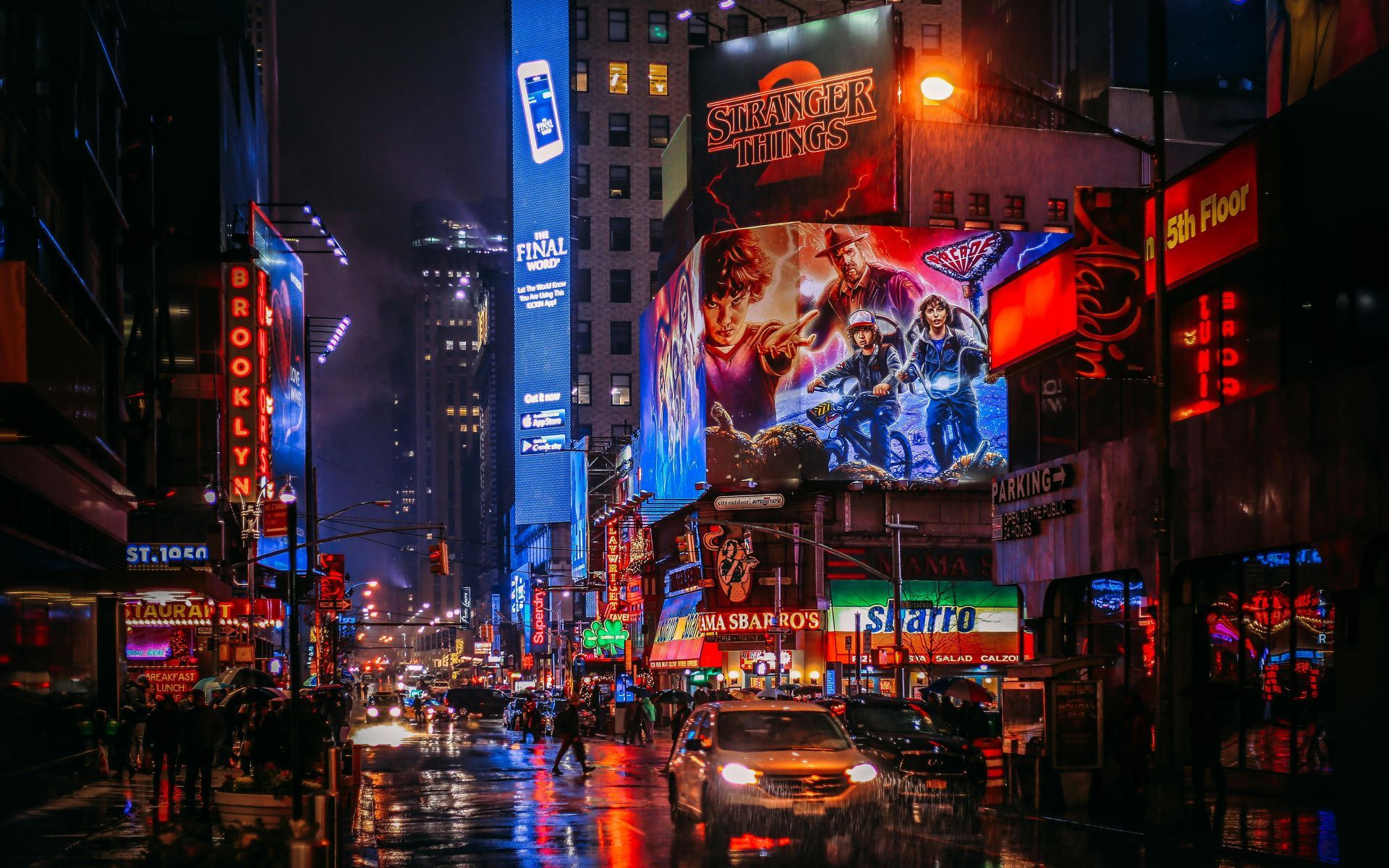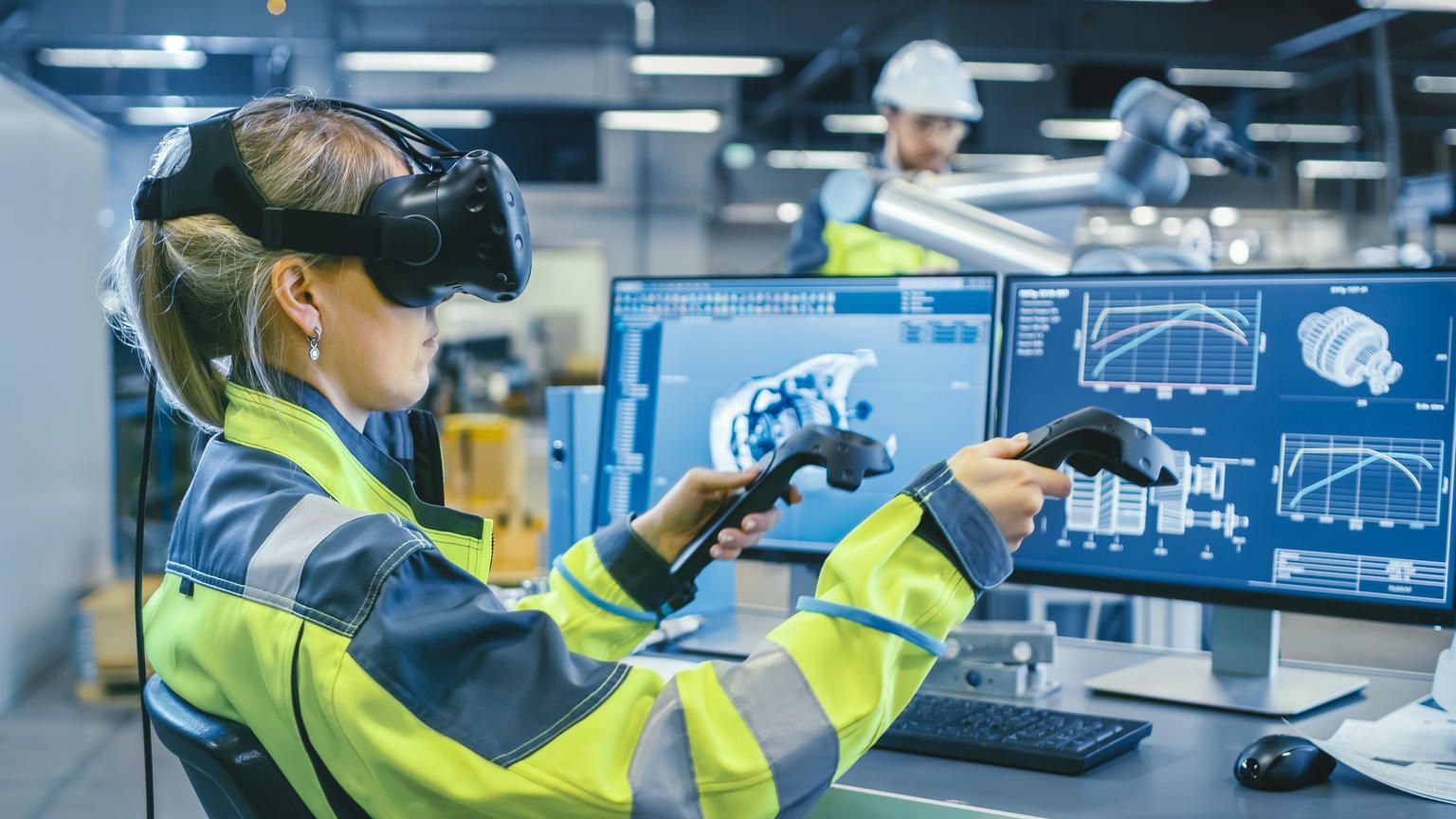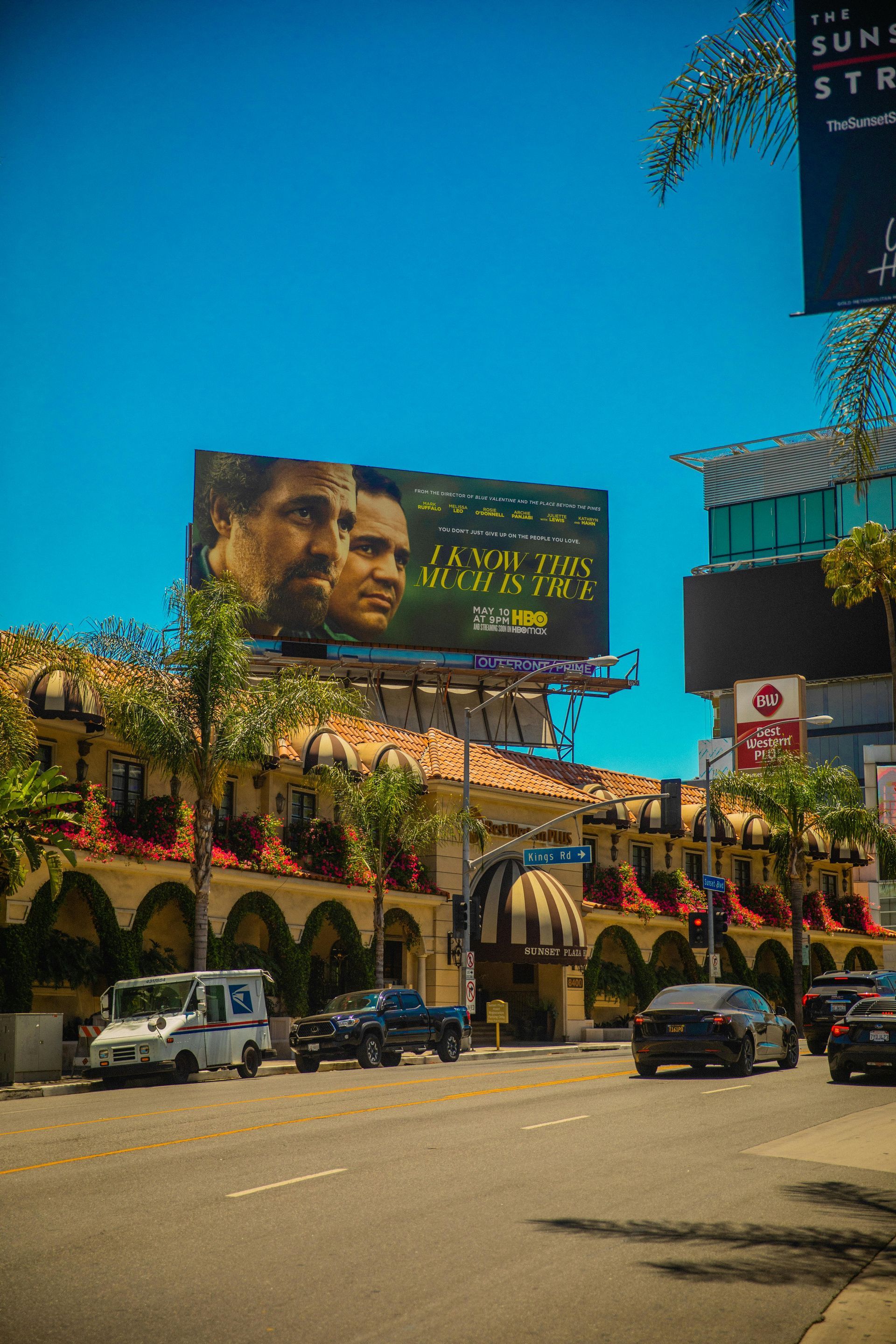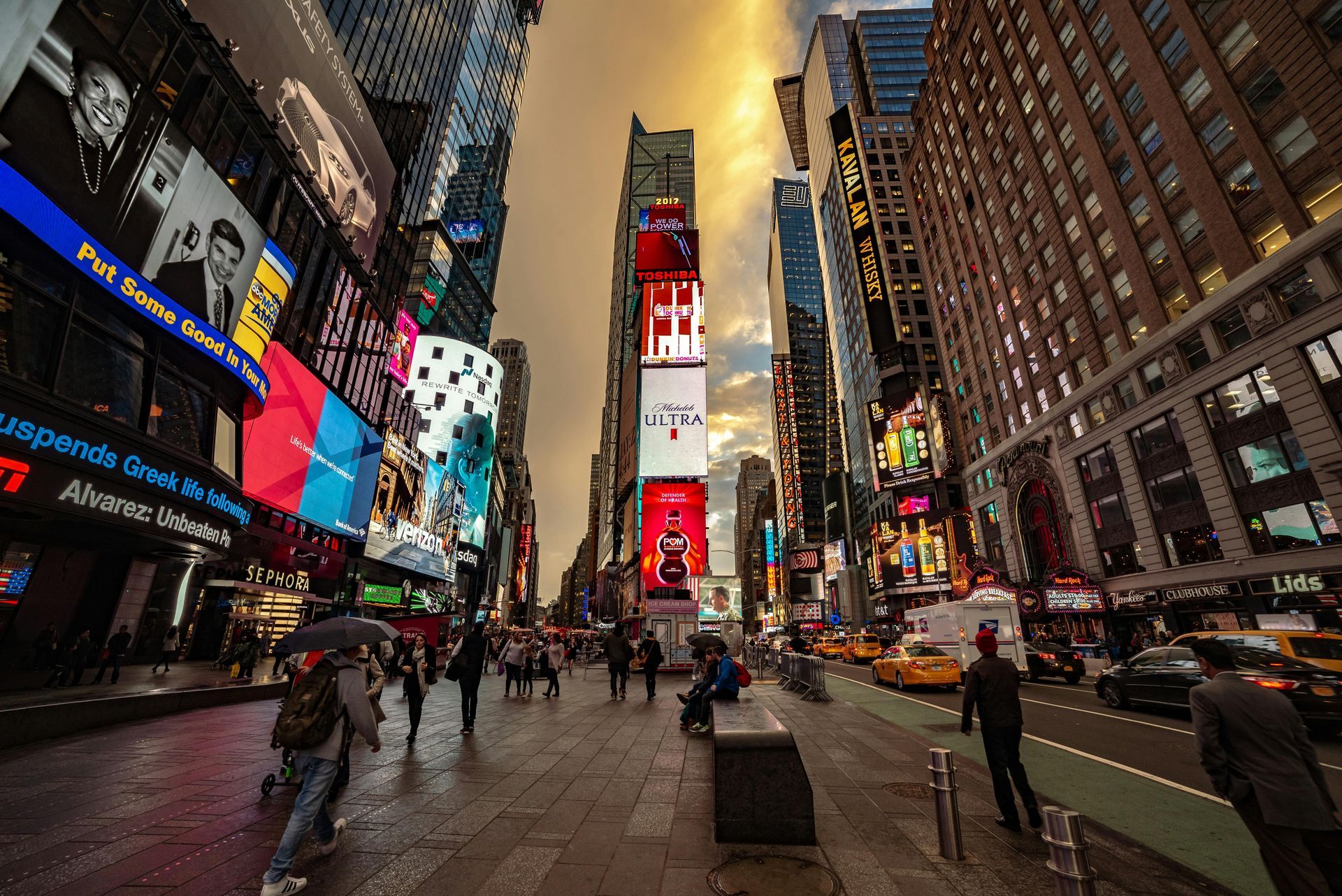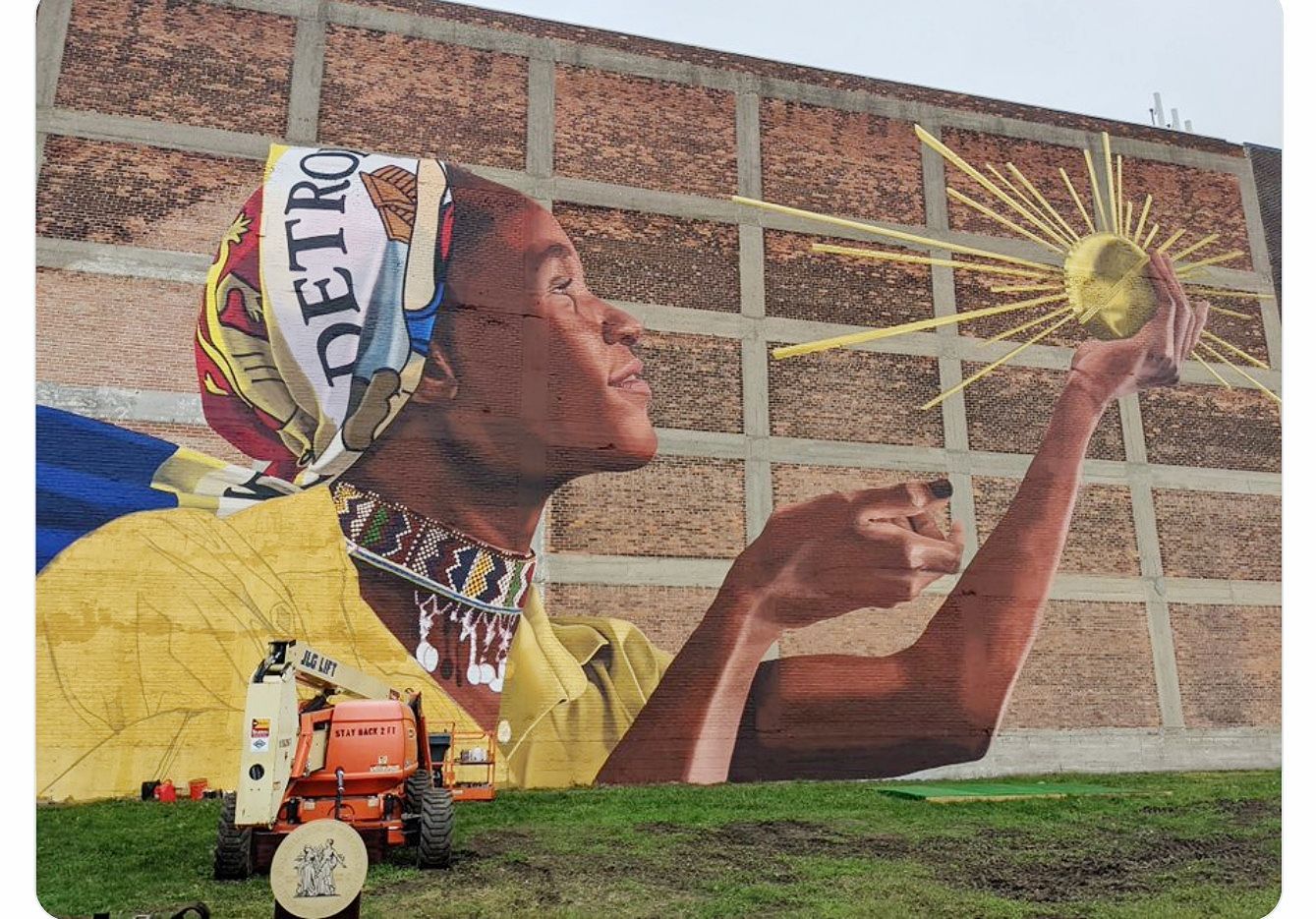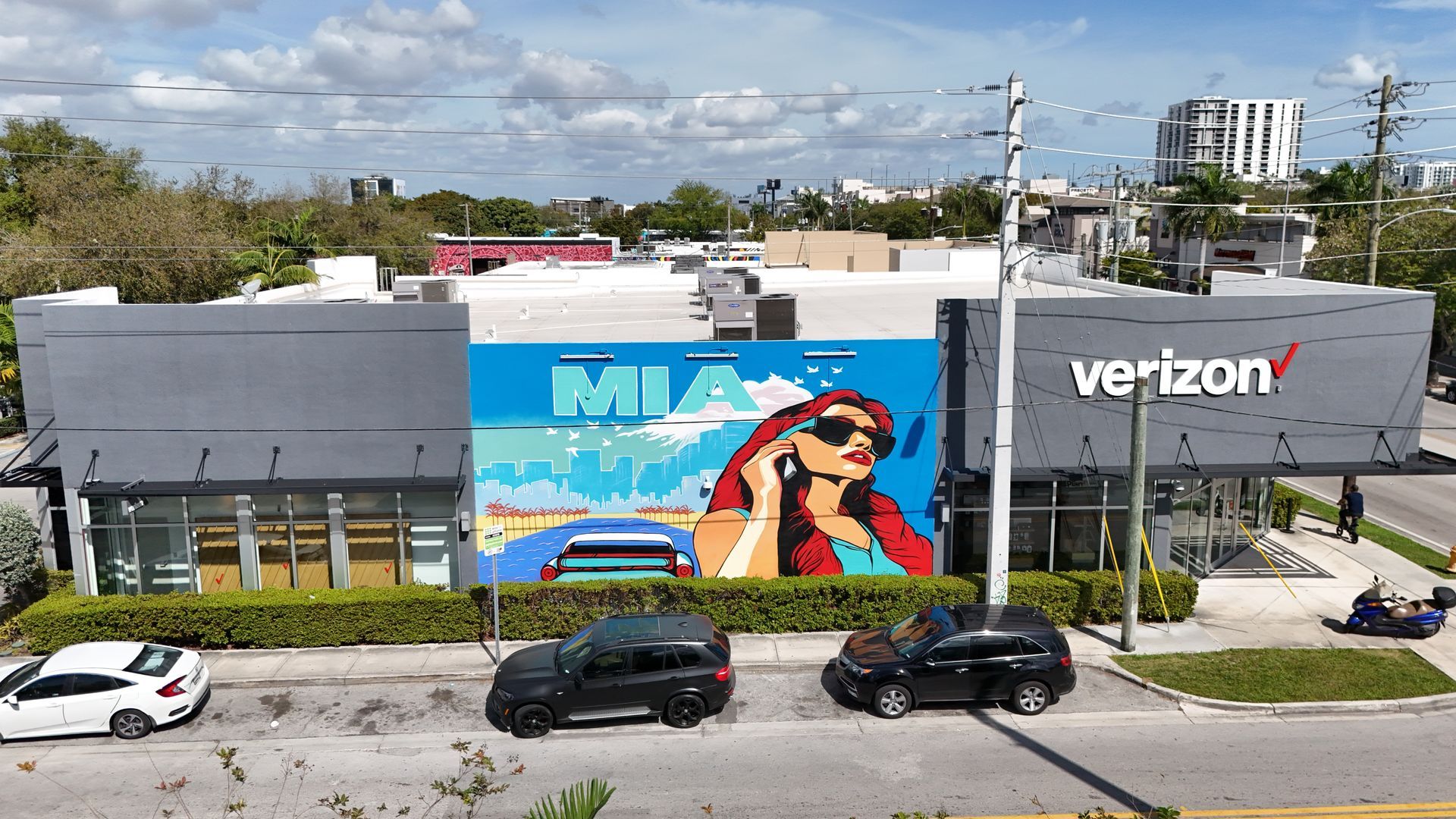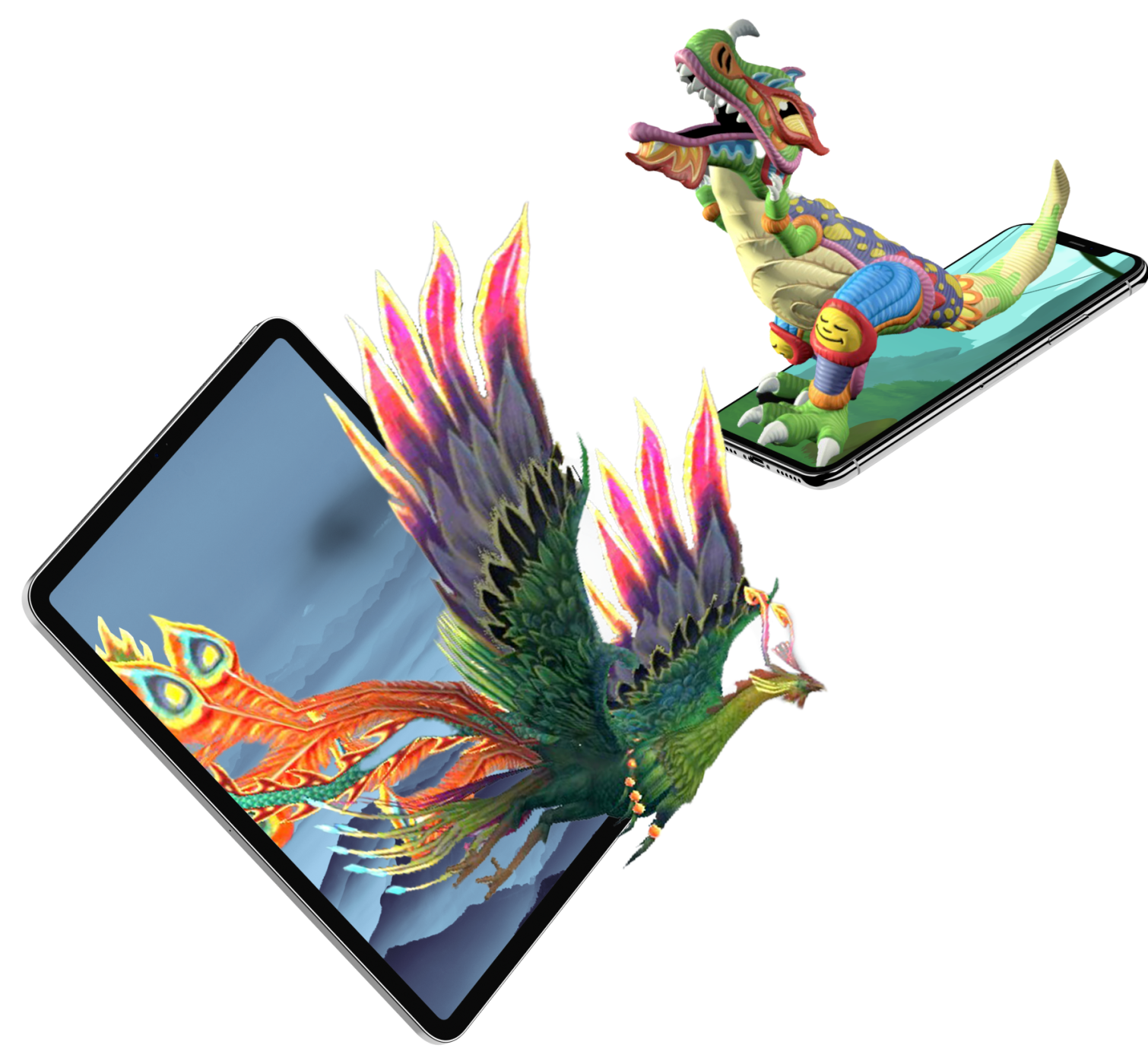How Restaurants Are Succeeding with Augmented Reality
In today’s tech-savvy world, restaurants are always looking for ways to stand out and create unforgettable experiences for their guests. With the rise of online ordering and mobile apps for loyalty programs, technology has truly changed how we enjoy dining out. Now, there’s a new and exciting trend taking over the restaurant scene—augmented reality (AR)! This cool technology lets restaurants blend digital elements with the real world, turning ordinary meals into interactive adventures.
With AR, restaurants can enhance customer engagement, boost brand recognition, and increase revenue through fun and innovative ideas like AR menus, immersive dining spaces, and eye-catching storefronts. In this article, we’ll dive into how restaurants are embracing augmented reality, showcasing popular trends and inspiring examples, including the growing trend of vibrant AR murals both outside and inside the restaurant.
1. Understanding Augmented Reality in the Restaurant Industry
Augmented reality is a technology that overlays computer-generated images, animations, or information in real time onto the user’s view of the physical environment. Unlike virtual reality (VR), which requires fully immersive headsets, AR often only needs a smartphone or tablet camera to blend digital visuals with the real world. This makes AR highly accessible and user-friendly for both businesses and consumers.
Adopting AR opens up a spectrum of possibilities for restaurants, from showcasing interactive menus to creating unique dining experiences that captivate customers’ attention. In a world saturated with choices, standing out is crucial for success. AR helps achieve that by creating an immersive, shareable moment that resonates with diners long after they leave.
In the past, restaurants have relied on traditional marketing methods—print ads, billboards, or social media posts. While these methods are still effective, AR offers a layer of personalization and excitement that more conventional forms of advertising can’t match. Consequently, more and more dining establishments have begun to adopt AR campaigns to give their customers memorable, modern experiences that spark curiosity and conversation.
2. The Rise of AR Murals on Storefronts and Inside Dining Spaces
One of the most captivating AR applications in the hospitality world is augmented reality murals. These murals, whether on the storefront or inside a restaurant or bar, present an innovative way to catch passersby’s attention and encourage patrons to engage with the restaurant’s brand on a deeper level.
At first glance, an AR mural might appear to be a traditional painted or printed design. However, when viewed through a smartphone or tablet, the mural comes to life with motion graphics, interactive characters, and gameplay. For instance, imagine walking by a restaurant featuring a vibrant mural of fish swimming on the window. Scan it with your phone, and suddenly those fish start moving, forming shapes, and reacting to real-time user interactions like tapping on the screen. This dynamic blend of art and technology fascinates potential customers and entices them to step inside, curious to discover more about the restaurant.
Inside, AR murals can heighten the ambiance of a dining space, turning walls into interactive art pieces. For example, a bar might have a mural depicting a festive scene with floating bubbles and neon lights. When viewed through an AR app, each bubble could pop into a mini drink recipe or show an animated bartender mixing a cocktail. This not only elevates the look of the space but also provides entertainment and valuable content—like creative drink ideas—for the patrons.
3. Enhancing Customer Engagement and Brand Storytelling
The shift toward augmented reality in restaurants isn’t just about flashy visuals; it’s deeply tied to the customer engagement and brand storytelling that restaurants can achieve. AR technology offers endless possibilities for businesses to tell their brand story in creative, visually striking ways.
- Storytelling Through Art: An AR mural might depict the restaurant's history, highlighting milestones, achievements, or the founder’s journey. For instance, a family-owned restaurant could incorporate vintage photos and genealogical details into the augmented mural, bridging the past and present. By scanning the mural, customers could watch short video clips or read interesting anecdotes about the place’s heritage.
- Interactive Menus: Beyond murals, restaurants can employ AR to
showcase menu items with 3D models. When customers point their smartphones at a flat menu, they can see rotating 3D images of the dish, ingredient details, and even nutritional information. This feature helps customers make informed choices while also providing transparency about each dish's sourcing and preparation process.
- Gamification: AR allows restaurants to create fun mini-games or interactive challenges that keep customers engaged while waiting for their orders. This makes the wait time shorter and entertains children and younger diners, improving the overall dining experience and generating positive word-of-mouth.
Incorporating AR into the restaurant environment ensures that customers leave with more than just a full belly; they depart with memories of a unique and shareworthy experience that sets one establishment apart from the competition.
4. Creating Shareable Moments for Social Media
In an era where social media platforms drive consumer decisions and brand visibility, having an Instagrammable or TikTok-worthy setting can profoundly impact a restaurant’s success. Augmented reality heightens the shareability of any visual element. Patrons who encounter an engaging AR mural or menu are likely to capture and post those moments online, effectively generating user-generated content (UGC) that boosts organic marketing.
- Viral Potential: Short-form video platforms like TikTok thrive on creative and interactive content. An AR effect that reveals hidden Easter eggs in a restaurant’s décor or animates a static design can quickly go viral as customers post their experiences. This digital word-of-mouth acts like free publicity, drawing more foot traffic and building brand recognition.
- Hashtag Campaigns: Restaurants can encourage customers to share their AR interactions online under a unique hashtag. By doing so, the brand can easily track audience engagement, build community, and even conduct special promotions for those who share AR-related content.
- Influencer Collaborations: Partnering with social media influencers is another way for restaurants to leverage AR. Providing influencers with a personalized AR experience can generate buzz and reach new audiences, as these individuals have a large following of enthusiastic foodies eager to try fresh experiences.
Ultimately, making the dining experience “shareworthy” is a key strategy for restaurants seeking to stand out. AR murals and interactive elements create the perfect backdrop for social media posts, capturing attention and inspiring a sense of wonder in potential patrons.
5. Streamlining and Personalizing the Ordering Process
Although murals and décor are high-profile elements, augmented reality can also offer practical solutions that streamline ordering and enhance personalization:
- AR Menus
By scanning a menu with a smartphone, customers can view detailed 3D models of dishes. They can see portion sizes, ingredient lists, and even watch short videos on how items are prepared. This method provides clarity, reduces back-and-forth questions to servers, and speeds up decision-making. It’s especially useful in restaurants with language barriers or for customers with dietary restrictions. - Interactive Wine and Beer Lists
Bars and restaurants with extensive beverage offerings can utilize AR to guide customers in selecting the perfect drink. By scanning the wine or beer list, patrons might see tasting notes, recommended food pairings, or short video clips featuring a sommelier explaining the flavor profiles. This personal touch can create a stronger connection between customers and the restaurant’s offerings. - Customization Options
Some restaurants allow customers to use AR technology to customize their dishes in real time. Diners can adjust ingredient amounts, select toppings, or choose from various plating options by dragging and dropping digital elements onto a virtual dish. This interactive approach elevates the fun factor of ordering while emphasizing the restaurant’s commitment to personalization.
By integrating AR into the ordering process, restaurants can address customers’ increasing desire for transparency and interactivity. This also helps reduce misunderstandings related to allergies or dietary preferences, leading to higher satisfaction rates and return visits.
6. Boosting Efficiency and Reducing Costs with AR Tools
While AR is often highlighted for its marketing and engagement potential, it can also optimize a restaurant’s internal operations and help reduce costs:
- Staff Training: AR-based tutorials can demonstrate recipes, plating presentations, and even certain cooking techniques. This speeds up the training process and reduces mistakes in food preparation. By scanning a QR code in the kitchen, a trainee could immediately bring up a step-by-step guide superimposed onto the real cooking environment.
- Equipment Maintenance: Larger chain restaurants or those with specialized machinery can use AR to guide staff on maintenance procedures. For instance, scanning a piece of equipment with a mobile device could reveal a virtual diagram showing parts that need cleaning, lubrication, or replacement. This reduces downtime and ensures consistency in operations.
- Inventory Management: While still in early development, future AR applications could allow staff to quickly scan shelves and visually overlay product details and expiration dates. This technology would revolutionize how restaurants manage their stock, reduce food wastage, and maintain quality standards.
By leveraging AR behind the scenes, restaurants can streamline operational tasks, lowering costs in the long run. The same tools that make for compelling customer-facing experiences can also dramatically improve the efficiency and accuracy of day-to-day operations.
7. Case Studies of Restaurants Embracing AR
- Sketch Kitchen & Bar: A cozy gastropub in a major city might commission a local artist to paint a mural on its exterior. The artist integrates hidden AR markers in the design, so when passersby scan the mural with an official app, whimsical animals pop out, inviting them inside. Once people step in, the AR magic continues with an interior mural that depicts a garden scene with flowers blossoming in real time. Because of these installations, the bar garners buzz on social media, leading to a surge in evening crowds.
- Fusion Bites: A restaurant focusing on international fusion cuisine implements AR menus. Each dish on the menu has an accompanying video demonstration by the head chef, highlighting the cultural influences in the recipe. Customers can also toggle between different languages to ensure they fully understand the item’s flavor profile, cooking techniques, and potential allergens. This approach eliminates confusion, speeds up ordering, and fosters a deeper appreciation of the restaurant’s culinary concept.
- Brews & Views: A craft beer pub invests in AR technology to educate customers on the beer-making process. Scanning a poster on the wall reveals a tour of their microbrewery, complete with interactive diagrams explaining the fermentation process, types of hops, and flavor characteristics. This experiential learning approach enhances customer loyalty, as visitors enjoy a sense of expertise and insider knowledge about the pub’s offerings.
These examples demonstrate how AR can be creatively adapted to fit a restaurant’s brand, target audience, and location. Whether through captivating visuals or interactive menus, these establishments have leveraged AR to differentiate themselves from the competition and provide experiences that diners remember and talk about long after their meals are done.
8. The Future of AR in Dining: Beyond the Novelty
Although AR is still considered cutting-edge in many respects, it’s clear that this technology is more than a fleeting trend. Its ability to enhance customer engagement, streamline operations, and offer unparalleled customization means that it is likely here to stay. Several potential advancements hint at an even brighter future for AR in the restaurant industry:
- Wearable AR: As wearable technology becomes more prevalent—such as smart glasses—diners may be able to experience immersive menus and décor overlays without needing to hold up a smartphone. This hands-free approach would make AR even more seamless and natural to use.
- Integration with Smart Devices: Future AR systems may integrate with in-restaurant devices like tabletop tablets, voice-activated menus, and automated ordering systems. This synergy would create a holistic smart dining environment where AR is just one component of a larger technological ecosystem designed to enhance convenience and delight customers.
- Hyper-Personalized Promotions: Location-based AR triggers can deliver targeted promos to diners’ phones as they walk by a restaurant, indicating daily specials or highlighting signature dishes. Combined with loyalty programs, this level of personalization can significantly boost repeat visits.
- Sustainability Efforts: AR could also play a role in educating patrons about sustainability, displaying environmental footprints of dishes, farm-to-table sourcing locations, and more. By offering transparency, restaurants could encourage eco-conscious choices, aligning their brand with responsible dining.
As the technology matures, we can expect more seamless and robust integration into the dining experience. Restaurants that embrace AR early can establish themselves as pioneers, attracting both local and global audiences eager to try something new and exciting.
9. Overcoming Challenges and Ensuring a Successful AR Implementation
While augmented reality presents immense opportunities, it’s important to address some challenges to ensure a smooth rollout:
- Upfront Costs: Professional AR development, from 3D modeling to app creation, can be expensive. However, costs continue to drop as AR becomes more mainstream, and the long-term return on investment (ROI) can justify the initial expense. Smaller restaurants may opt for simpler AR applications or partner with local artists and developers.
- Technology Barriers: Not all customers may be tech-savvy or have the latest smartphones. Offering easy-to-understand guides, clear instructions, and possibly tablets for on-site use can make AR experiences more inclusive.
- Maintenance: Digital content requires updates, whether it’s adding seasonal menu items or refreshing the look of an AR mural. Planning for regular content updates ensures that AR features remain fresh and exciting, rather than becoming stale over time.
- Integration with Existing Systems: Aligning AR systems with existing point-of-sale (POS), reservation, and loyalty program platforms is crucial for a seamless experience. Collaboration among developers, digital marketers, and restaurant management is essential to integrate AR into day-to-day operations effectively.
By addressing these challenges proactively, restaurants can harness AR’s potential to captivate audiences, streamline operations, and ultimately boost profitability.
10. Conclusion: Embracing the AR Revolution
Augmented reality is transforming the hospitality landscape, and restaurants that adopt this innovative technology stand to gain a significant edge. From eye-catching AR murals on storefronts that stop foot traffic in its tracks, to immersive interior designs that turn walls into interactive stories, AR elevates a restaurant’s visual appeal. Beyond aesthetics, it offers practical benefits such as detailed AR menus, staff training solutions, and even inventory management tools.
The future of AR in dining looks bright. As more establishments implement AR solutions, customers will come to expect a certain level of interactivity and personalization when they dine out. Restaurants that embrace AR now are positioning themselves as industry leaders, offering unique experiences that resonate with both tech-savvy millennials and curious newcomers alike. By overcoming the initial challenges—such as cost, technology barriers, and ongoing maintenance—restaurants can craft truly unforgettable experiences that keep diners returning for more.
Whether you’re a small local café looking to tell your family’s story through an interactive mural or a large chain aiming to revolutionize your menu, augmented reality provides a powerful tool to delight customers, build brand loyalty, and stand out in a crowded marketplace. By combining technology with creativity and storytelling, restaurants can deliver moments of wonder that help customers form lasting emotional connections with their brand.
As you explore AR solutions, remember the importance of integrating them seamlessly into your overall customer experience. Develop a clear strategy that aligns with your restaurant’s personality, values, and audience expectations. The potential is vast—AR can be the vehicle for your brand’s narrative, guiding customers through your history, your menu, and the spark that makes your establishment unique. With augmented reality, the future of dining is limited only by the bounds of imagination. And in a world where people crave fresh, distinctive experiences, that’s the ingredient for success.
TALK TO A PRO
We're here to bring your brand to life!
Stay Connected with BrandXR
Create Augmented Reality for Free!
Create, Publish, and Measure 3D Augmented Reality Experiences Without Having to Code.
